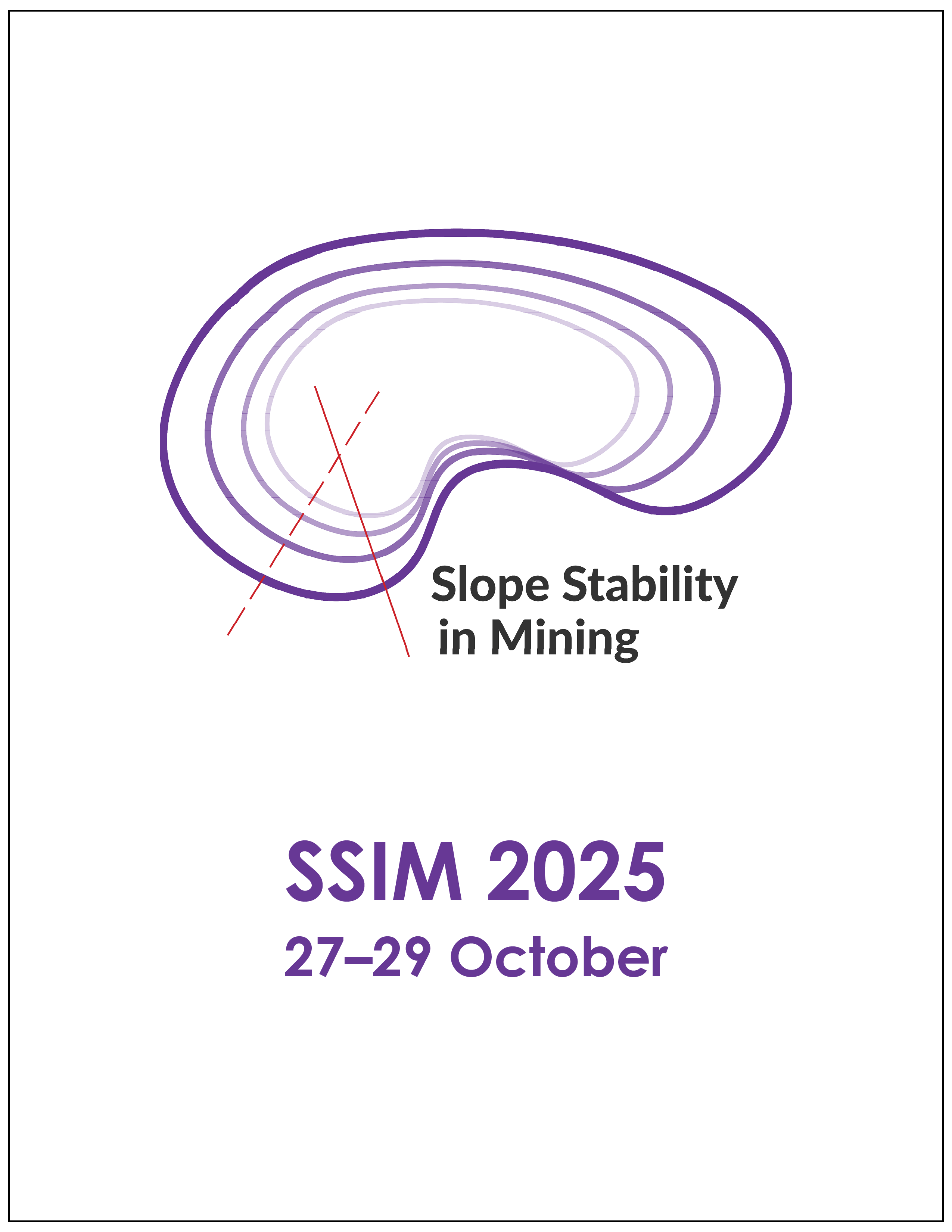3D geological models: A reliable depiction of nature or a sketch of our biases?

|
Authors: Zorzi, L; Elmo, D; Tafwidla, F; Lenauer, I; Furney, S |
DOI https://doi.org/10.36487/ACG_repo/2535_02
Cite As:
Zorzi, L, Elmo, D, Tafwidla, F, Lenauer, I & Furney, S 2025, '3D geological models: A reliable depiction of nature or a sketch of our biases?', in JJ Potter & J Wesseloo (eds), SSIM 2025: Fourth International Slope Stability in Mining Conference, Australian Centre for Geomechanics, Perth, https://doi.org/10.36487/ACG_repo/2535_02
Abstract:
3D models represent the modelling team’s hypotheses about the most likely rock mass configuration, constructed from limited and sparse data (often as little as 1/100,000 or 0.00 1% of the rock mass). Therefore, modelling requires reliable professional judgement, which involves making decisions based on one’s beliefs about the information. This judgement is crucial for assessing the trustworthiness of data and interpolating between sample locations. Sound judgement adds value to the interpretation and modelling process. However, since judgement is influenced by personal opinions and beliefs, modellers must balance objectivity with subjective intuition, biases, and uncertainties. They must proactively prevent negative factors – such as guesses, gut feelings, and overconfidence – from entering the model, which still providing experience-based input to supplement the purely mathematical interpolation. Modellers and model users must recognise that a model is merely a sketch of a human interpretation about the rock mass, normally derived from sparse data points, whereas the rock mass itself is a product of natural processes and laws. While a model can be visually appealing or numerically sophisticated, it is unlikely to accurately depict nature's complexity. This work, based on open pit case studies, highlights the importance of explaining intuition, biases, and uncertainties when constructing geological, structural, or geotechnical models. It also discusses how to ensure these models are at least reliable hypotheses about the complex nature they aim to represent.
Keywords: 3D geological modelling, 3D structural model, uncertainties
References:
Banks, G, Olsen, S & Gusak, A 2020, ‘A method to evaluate REE-HFSE mineralised provinces by value creation potential, and an example of application: Gardar REE-HFSE Province, Greenland’, Geoscience Frontiers, vol. 11,
Bond, CE, Gibbs, AD, Shipton, ZK & Jones, S 2007, ‘What do you think this is? “Conceptual uncertainty” in geoscience interpretation’, GSA Today, vol. 17, no. 11, pp. 4–10.
Boult, P, Freeman, B & Yielding, G 2016, ‘Structural interpretation of seismic geologic reality, perspective, and 3-D thinking’, in B Krantz, C Ormand & B Freeman (eds), 3-D Structural Interpretation: Earth, Mind, and Machine: AAPG Memoir, vol. 111, pp. 75–89.
Caers, J 2011, Modelling Uncertainty in the Earth Sciences, John Wiley & Sons Ltd, Hoboken.
Campbell, R, Barnett, WP & Levy, M 2015, ‘A structural geology matrix for geotechnical designs in hard rock’, International Symposium on Slope Stability in Open Pit Mining and Civil Engineering, The South African Institute of Mining and Metallurgy, Johannesburg, pp. 475–484.
Elmo, D, Mitelman, A & Yang, B 2022, ‘An examination of rock engineering knowledge through a philosophical lens’, Geosciences, vol. 12, no. 174.
Hawking, SW & Mlodinow, L 2010, The Grand Design, Bantam Books, New York.
Liang, D, Hua, W, Liu, X, Zhao, Y & Liu, Z 2021, ‘Uncertainty assessment of a 3D geological model by integrating data errors, spatial variations and cognition bias’, Earth Science Informatics, vol. 14, pp. 161–178.
Read, J & Stacey P 2009, Guidelines for Open Pit Design, CRC Press/Balkema, Boca Raton.
Reid, RJ & Cowan, EJ 2023, ‘Towards quantifying uncertainties in geological models for mineral resource estimation though outside-in deposit-scale structural analysis’, Australian Journal of Earth Sciences, pp. 990–1009,
Savage, N, Nicholas, L, Wilson, A & Seery, J 2013, ‘Visual communication of geological confidence – a move toward a less subjective approach’, Iron Ore Conference 2013, Australasian Institute of Mining and Metallurgy, Melbourne.
SRK Consulting 2021, Guidelines for Structural and Geological Models, University of Queensland – LOP 3 Project.
Stoch, B, Basson, IJ, Gloyn-Jones, JN & Lomberg, KG 2022, ‘The influence of viariable anisotropic search parameters on implicitly-modelled volumes and estimated contained metal in a structurally-complex gold deposits’, Ore Geology Reviews, vol. 142, no. 104719,
Quigley, M, Bennetts, LG, Durance, P, Kuhnert, PM, Lindsay, MD, Pembleton, KG, Roberts, ME & White, CJ 2019, ‘The provision and utility of science and uncertainty to decision-makers: earth science case studies’, Environment Systems and Decisions, vol. 39, pp. 307–348.
Wilson, C, Bond, CE & Shipley, TF 2019, ‘How can geologic decision-making under uncertainty be improved?’, Solid Earth, vol. 10, pp. 1469–1488.
© Copyright 2025, Australian Centre for Geomechanics (ACG), The University of Western Australia. All rights reserved.
View copyright/legal information
Please direct any queries or error reports to repository-acg@uwa.edu.au
View copyright/legal information
Please direct any queries or error reports to repository-acg@uwa.edu.au

